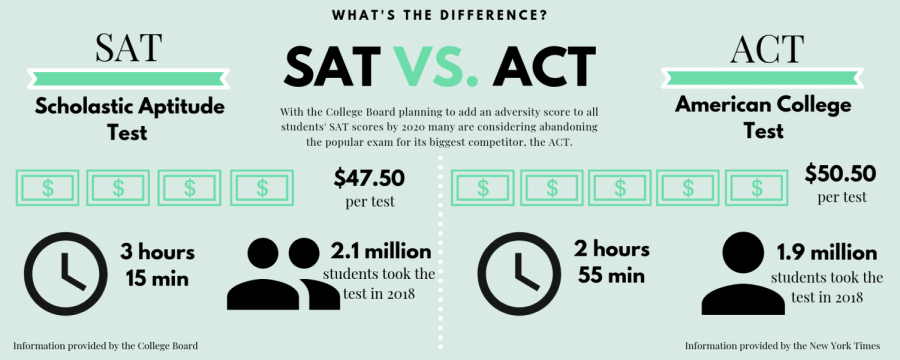The SAT’s new adversity score proves to be more troublesome than expected
The College Board plans to incorporate the new adversity index in all national SATs by the year 2020.
According to the College Board, over 2 million students took the SAT in the Class of 2018, the highest number yet, a number which is still expected to rise in upcoming years. However, with so many students taking the infamous exam, the SAT has announced that beginning in the year 2020 it will strive to quantify the unquantifiable by including an “adversity score” in its national tests to students in disadvantaged economic circumstances.
There is no question that by including the Environmental Context Dashboard, or an adversity score, the company is not only losing control over students’ scores but also lacks transparency in calculating this new figure. The score takes into account 31 factors that can impact a student’s education — from the graduation rates and free lunch rates in the neighborhood to personal aspects like the number of parents a student lives with. This score, which ranges from zero to 100, with 100 being the most disadvantaged, was created to provide college admissions officers with another metric to judge applicants besides test scores. An algorithm then generates a number from the answers that is never revealed to the student themself. This opaque algorithm could potentially be affected by a coding error which could impact a student’s score without them knowing.
Aside from that, the new adversity score opens up loopholes that may cause more scandals like the one this March involving Lori Laughlin and other parents who found a way to cheat the system to get their students admitted into elite universities. The new adversity score aims to resolve none of the above and only frames students as measures of statistics also demonstrating that the aptitude tests are far from perfect. Even though it may be hard to increase crime rates in a neighborhood, schools could still possibly manipulate their adversity data for an admissions boost or parents could set up fake addresses in low-income areas.

Although admissions officers should take into account the obstacles that students have faced and overcome, the new index doesn’t provide information about the actual student but rather a number based on census data. It ignores the fact that individuals face many types of difficulties, many of which aren’t measured in the index. The score does not measure the influences of parents, siblings and mentors and reshapes perceptions of student accomplishments by placing emphasis on things out of their control.
The adversity index is set to roll out nationally by 2020, with many prominent universities already having tested the data with recent applicants. The undergraduate admissions dean at Yale University, one of the 50 schools chosen to pilot the program, reported that the system has already helped diversify the freshman class. Other schools, such like Georgia Tech, have also mentioned that the data helped the university deepen its review of applications. Yet, many other schools like the University of Chicago have since stopped requiring standardized tests like the SAT and ACT from applicants to emphasize that students are more than just numbers.
The College Board’s new scoring system is not the first systematic effort to give more context to SAT score and it certainly won’t be their last but its overall goal of creating a fair system ultimately dehumanizes applicants by oversimplifying the complexities of students’ lives into mere data points.

Hobbies: Reading mystery novels and traveling
Favorite shows: Find me the time to watch shows and I'll tell you
Places you want to travel to: Dubrovnik,...











